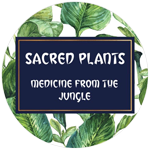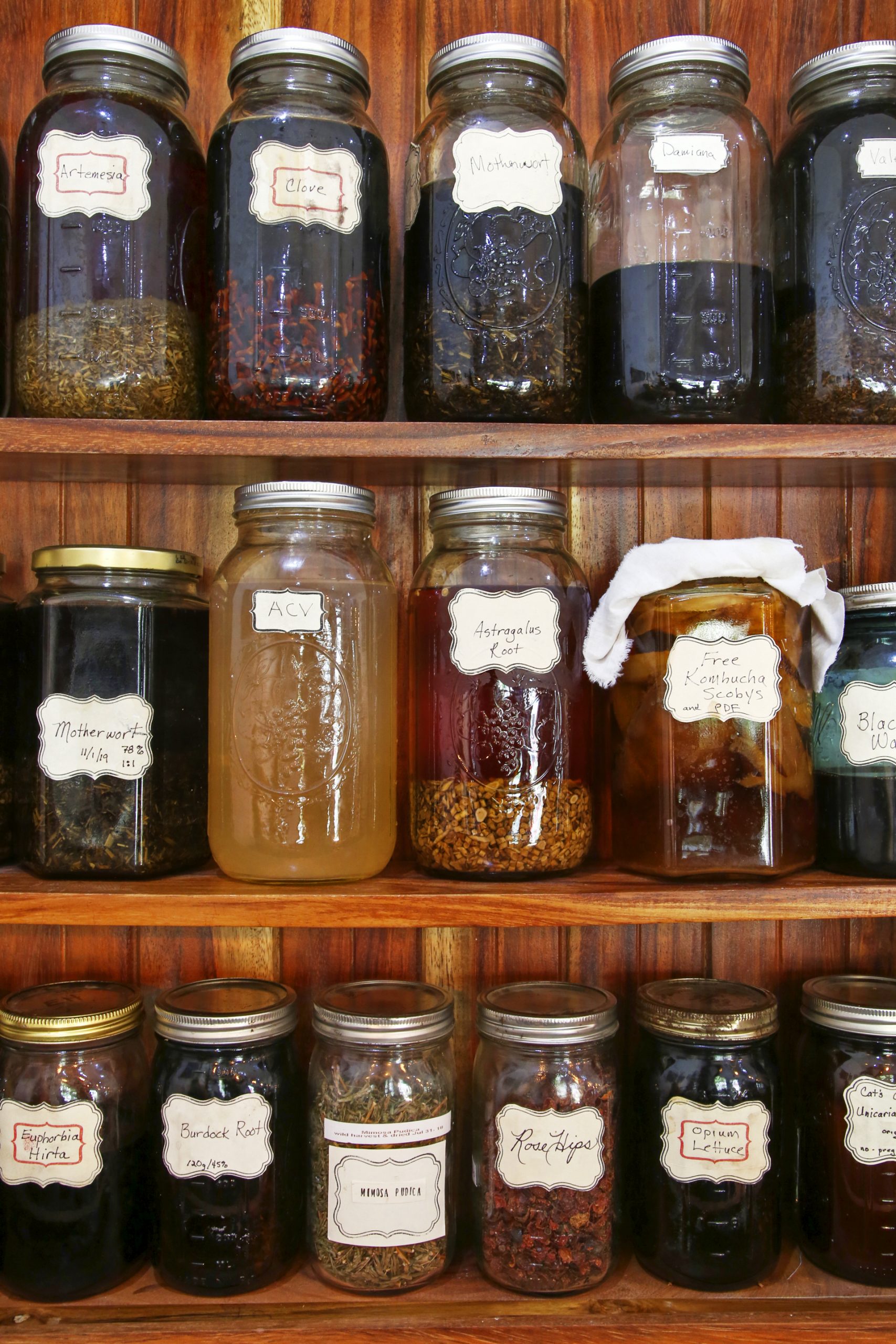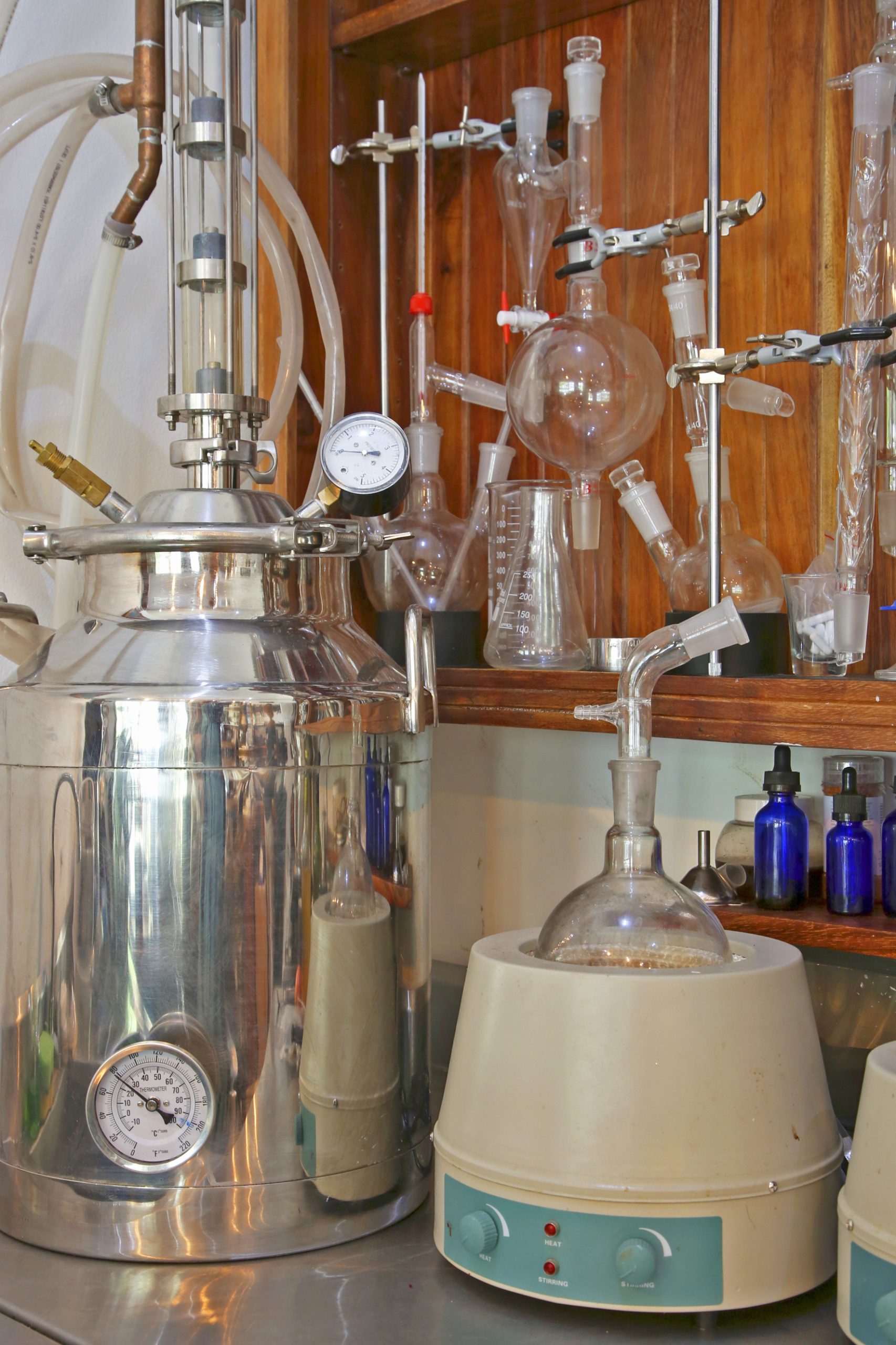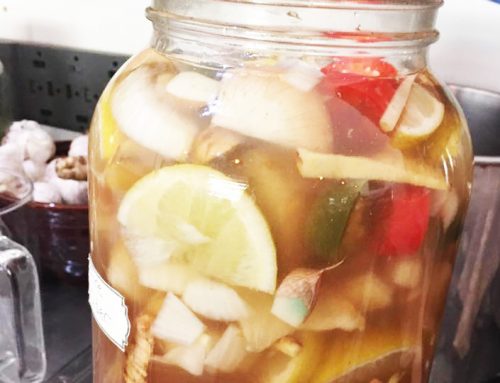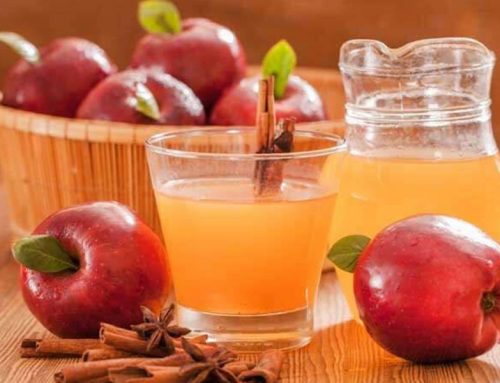I am asked how Sacred Plants Farmacy’s products are created almost every day. It basically comes down to understanding the chemical constituents you want to pull or extract from a particular plant and what is the optimal method to use.
~ All will be improved by increasing surface area before extracting.
Water extractions – Water extracts sugars, proteins, gums, mucilage, pectin, tannins, acids, coloring matter, mineral salts, glycosides, some alkaloids, most alkaloidal salts, and some essential oil very well, but is not very shelf stable.
Tea – A tea is made using a tablespoon of fresh or dried herb per cup of boiled water. You use mainly the aerial parts and steep for 2-10 minutes, covered. Usually you are trying to extract essential oils when you make a tea. Common herbal teas are aromatic plants, including: mint, chamomile, lavender, ginger…
Decoction – A decoction is made of roots, leaves, and berries. You simmer these tougher plant parts for 20-40 minutes or more in order to extract their constituents. Good plants to decoct include: pau d’arco bark, dandelion root, and elderberries.
Nourishing herbal infusion – A nourishing herbal infusion is made from 1 ounce of dried herb per quart of boiling water and steeped for a minimum of 4 hours. This method extracts the most minerals from nourishing plants. One would not make an infusion out of an aromatic plant. Good herbs for nourishing herbal infusions include: nettles, red clover, and oat straw.
Alcohol extraction: Tincture – Pure alcohol best extracts essential oils, resins, alkaloids, glycosides, organic acids, chlorophyll, acrid and bitter constituents, and castor oil, but not minerals, gums, or mucilage. A tincture is an alcohol extract of a plant, made using varying alcohol percentages. Some say to always use 40% alcohol (vodka) in order to get almost equal parts water and alcohol, and some say to always use 98% alcohol (everclear). Sacred Plants Farmacy tailors the alcohol percentage to the herb and its particular constituents. Tinctures are generally a very concentrated and convenient form to take an herb, and they have a long shelf life. Another benefit of a tincture is that you have a high control over the dosage. Normal dosages of tinctures are between 10 and 90 drops. 20% alcohol is the minimum requirement for shelf-stability. Tinctures can be made in several ways: Folk and ratio methods of maceration, or by percolation.
Folk Method – cut up fresh plant material and fill a jar to the top, packing it in well but not too hard. Go for a fairy mattress consistency. Fill to the top with 40% alcohol vodka and allow to steep for 4-6 weeks. Dried plant material – fill the jar ¼ – 1 /3 of the way with dried plant material (maybe a little more if it’s fluffy) and fill to the top with vodka. Allow to steep for 4-6 weeks. We do not use this method because 40% alcohol is limited in what chemical constituents it can extract. Vodka will never pull a terpene for example.
Ratio Method (preferred method of Sacred Plants Farmacy)– cut up and weigh plant material. Put in a jar and add the appropriate amount of water/alcohol mixture (at your preferred % abv) to achieve desired ratio. For example: if you have 4 ounces of fresh herb in the jar and want to make a 1:2 ratio, add 8 ounces of menstruum. You can also measure grams: milliliters if you choose. 1:2 is ideal for fresh plant material and 1:5 is common for dried plant material. Folk method often turns out to be 1:5 or more dilute with fresh plant material.
Herbal Extractions and Preparations Percolation method – this can only be done with dried, powdered herb. The herb is packed evenly into a funnel which sits in a container, and the menstruum is then poured over the top to slowly percolate through the powdered herb. Benefits – can make a tincture in 1-2 days, instead of 4-6 weeks. Does not require straining and squeezing. Cons – must use dried powdered herb. Takes some practice to get right. Does not extract gums or mucilages as well. Cannot use glycerin. Requires constant attention. Sometimes it does not work out – it is quite complicated.
Wine extraction – Wine is a traditional menstruum, though not often used today. It has a long shelf life and extracts as a dilute alcohol. A wine extraction is a medicine for the spirits as well as the body. Wine can also be made using medicinal herbs as a method of preserving these herbs (as opposed to soaking the herbs in already made wine). White wines were more often used traditionally due to the high tannin content of red wine, which may interfere with alkaloid rich herbs.
Vinegar extraction – herbal vinegar is made by infusing an herb in vinegar, much like making a tincture. This extracts minerals very well and can be used as a food as well as a tonic medicine. Generally vinegar extractions are not as strong medicinally as alcohol extractions, but they can be used more casually and still have a good medicinal effect. You can also use vinegar extractions externally as a hair rinse, for example (I love Nettle vinegar for this). Vinegar is useful for fixing and extraction of certain alkaloids which would have otherwise separated out of the mixture (such as with Lobelia).
Glycerin extraction – Glycerin is a sweet tasting plant fat. It tastes sweet, but contains no sugar and is slowly absorbed by the body. Glycerin does not extract resins, fixed oils, or volatile oils well. It has a longer shelf life than water, but shorter than alcohol. It is useful for individuals who do not want to consume alcohol, and the sweet taste appeals to children. Glycerin also extracts mucilage better than alcohol, and can be added to tinctures to stop the precipitation of tannins (such as with cinnamon). You can dilute glycerin with up to 20% water to make it a little less viscous, or mix with a little alcohol to boost shelf life and extractive oomph.
Infused honey – you can infuse herbs in honey to make a delicious, aromatic treat. This is not a super potent medicinal preparation, but a sweet and loving energetic healing preparation, and very shelf stable. It is best to infuse aromatic herbs in honey. Garlic honey is delicious and quite potent.
A syrup – syrup is a concentrated infusion or decoction (sometimes simmered to reduce volume by half) which is preserved and sweetened with honey. This is a tasty, alcohol free, relatively shelf stable and effective way to ingest many herbs that are well extracted by water. To increase shelf life, add 20% alcohol. For example – We add Echinacea tincture to our elderberry syrup sometimes, though not a 20% ratio of alcohol and therefore require refrigeration and we sell it frozen.
Elixir – an elixir is an extraction of an herb made from honey and alcohol (usually brandy). This tastes sweet and the alcohol gives it a little more extractive oomph. You put the herbs, honey, and alcohol all in the jar at once. An elixir is very shelf stable.
Oxymel – An oxymel is an herbal extraction using honey and vinegar (ideally apple cider vinegar. Check out our easy method to make your own raw, unfiltered ACV at home.) This sweet and sour taste is great for pungent herbs like garlic and onions. The combination of vinegar and honey by itself is very healing.
Infused oil – Infused oil can be made with fresh or dried herbs and cold infused over time or infused with low heat on a double boiler. Infused oils make excellent topical remedies and extract resins, essential oils, and flavonoids well. Olive oil is good to use as it has a long shelf life, but you can use any fixed oil. If you take good care that no water gets into your oil by using a clean dry jar and dry fresh herbs (wait 24 hours after rain), and to get rid of any water from the inside of plant itself (it will settle to the bottom after straining so that you can pour off the oil into a jar and leave the ‘muck’) then an herbal oil will have a long shelf life (unless the oil itself is prone to rancidity). Make sure to cover all of the plant material with oil to avoid mold, it likes to poke out of the top. If you get mold on the top, it is usually OK to scrape it off and top off the jar with more oil. If there is mold throughout the jar, then you will have to give the whole thing back to the earth.
Salve/balm – An herbal salve consists of infused oil which has beeswax added to create a thicker consistency. This is more convenient and less messy to carry around and to apply.
Cream – A cream is a mixture of infused oil and water. This is a tricky process as oil and water do not want to mix. I like to refer to making creams and lotions akin to making mayonnaise. There is method to the madness. Like making mayo you are creating a reaction between ingredients. If you dump the oil, egg yolk and lemon juice into a blender, no matter how long you whipped it up, you end up with a mess. To make a creamy mayo, you blend the yolks and lemon juice or vinegar together for the proper amount of time and only then do you begin drizzling in the olive oil ~ then voila! You have creamy white mayonnaise! Making creams and lotions without chemical additives, stabilizers and lab created binders is tricky and takes a lot of practice to get consistently right. We had many fails before we hit our home runs.
Powder – some herbs are used in powdered form. You can add powdered herb to foods like smoothies, soups, hummus, peanut butter, etc. You can also use powdered herbs in capsules. Powdered herbs lose potency more quickly because there is a much greater surface area exposed, but they are also a convenient way to ingest larger quantities of herbs as food.
Succus – A succus is the juice of an herb, which can be stabilized with alcohol or used as part of a tincture of that herb to increase potency, such as with cleavers.
Suppository – A suppository is made with either oil and wax or gelatin in molds. They are solid at room temperature or need to be refrigerated, and melt at body temperature. They are inserted into the anus or vagina to deliver herbal properties.
Compress – A compress is an herbal ‘hot pack.’ One steams an herb and places it over desired area, covering with a bandage or towel for desired length of time. Also called fomentation. Baths – there are several ways to use herbal tea as a bath – a full body bath, foot or hand bath, sitz bath, douche, or eye wash.
Liniment – Topical application of a tincture, often for pain. Our most popular liniment is Zheng Gu Shui, made from 20 ingredients, 19 of which we create the tincture for in our lab.
Hydrosol – A sweet smelling byproduct of essential oil distillation. For example – rose water.
Poultice – chewed or mashed up plant material applied directly to skin. Plantain.
Lozenge – Powdered herb mixed with honey or other liquid to form a lozenge which can be sucked on.
Resources. James Green. 2000.
